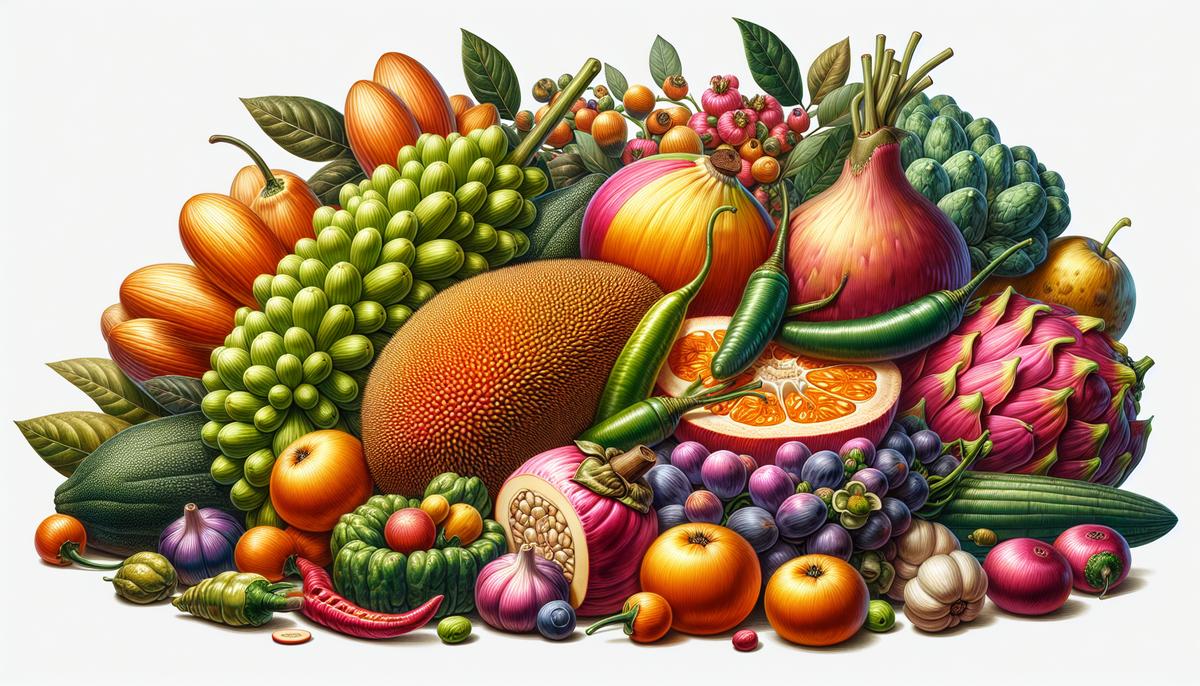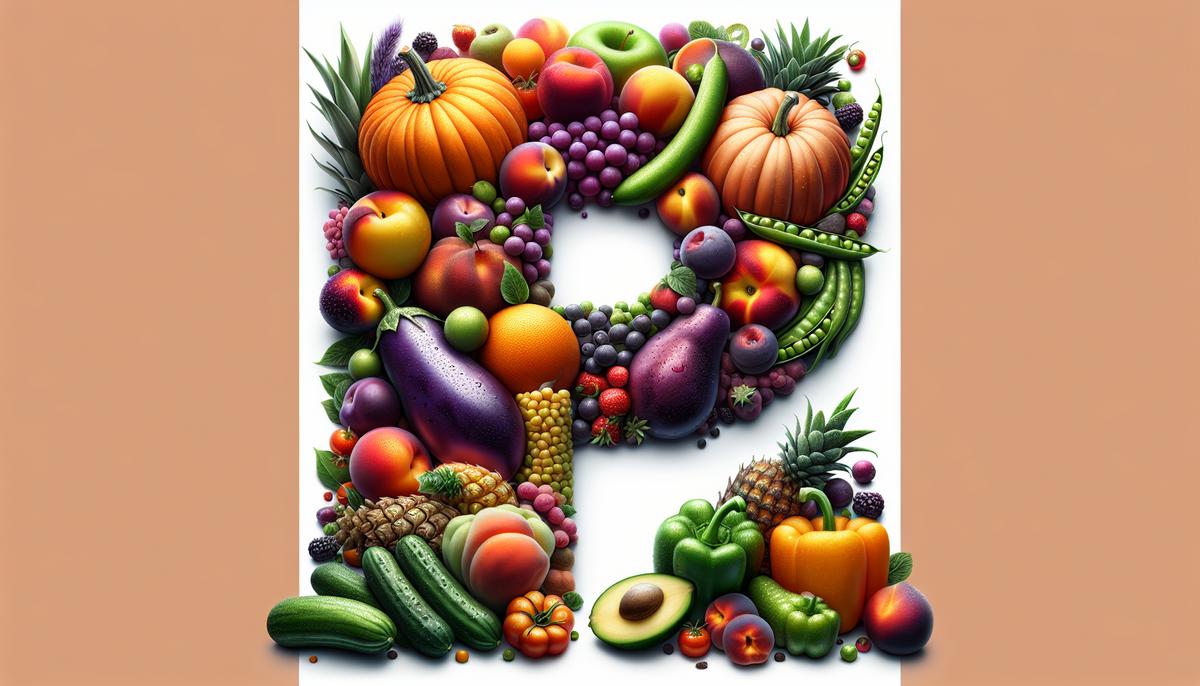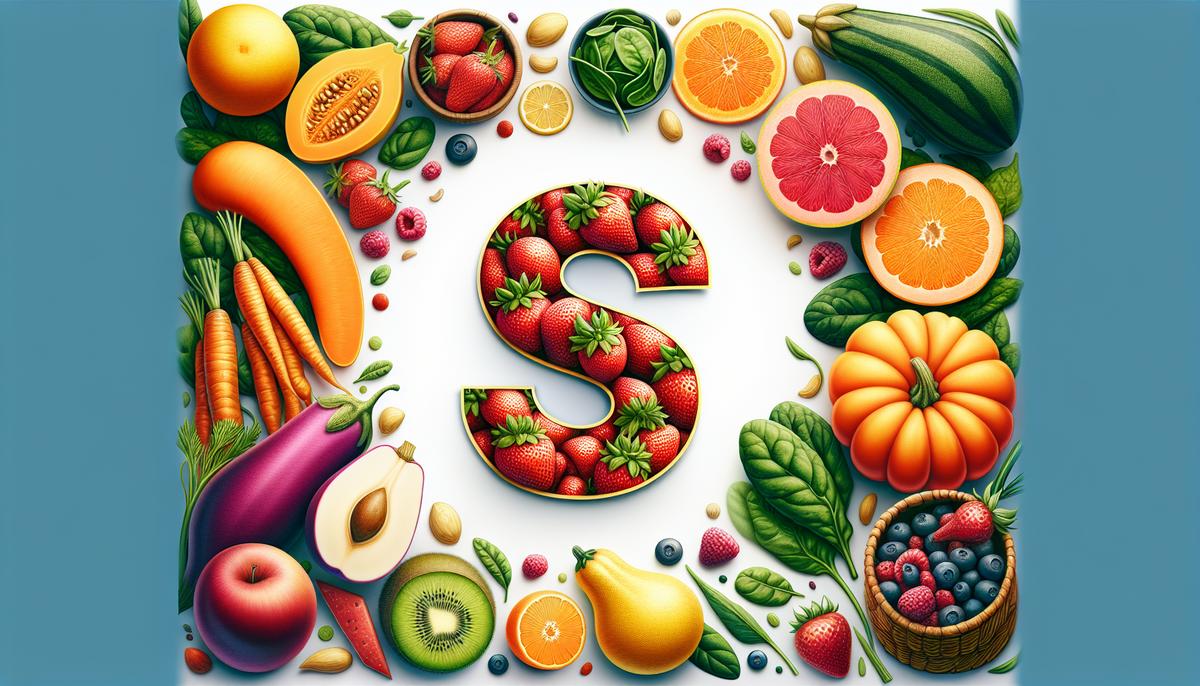Eating a variety of fruits and vegetables is one of the best ways to ensure you’re getting a wide range of nutrients. Today, let’s explore some unique and delicious options that start with the letter “J.” These fruits and vegetables not only bring vibrant flavors to your dishes but also pack a nutritional punch. From sweet and exotic fruits to spicy and crunchy vegetables, each one offers something special for your palate and your health.
Fruits that start with J
Jackfruit
Jackfruit is a tropical fruit known for its massive size and spiky exterior. Inside, you’ll find sweet, yellow pods that can be eaten raw or cooked. This versatile fruit is often used in savory dishes, particularly in vegan and vegetarian cuisine, because its texture resembles pulled pork when cooked. Whether you’re eating it fresh, dried, or as part of a savory meal, jackfruit is sure to delight your taste buds.
Nutritionally, jackfruit is a powerhouse. It is rich in vitamins A and C, which are important for immune function and skin health. It also contains a good amount of dietary fiber, which aids in digestion and helps maintain a healthy gut. Additionally, jackfruit provides potassium, which is essential for heart health and maintaining proper electrolyte balance.
In the kitchen, jackfruit can be used in a multitude of ways. Fresh jackfruit can be added to fruit salads or smoothies for a tropical twist. When young and unripe, it can be shredded and used in savory dishes like tacos, sandwiches, or curries. You can even find jackfruit chips or dried jackfruit as a convenient snack option.
Jambolan
Jambolan, also known as Java plum or black plum, is a small, dark-purple fruit with a slightly tart taste. It is commonly found in tropical regions and is often used in traditional medicine. The fruit is juicy and can be eaten fresh, while its seeds, leaves, and bark are also utilized for their health benefits.
This fruit is rich in antioxidants, which help fight off free radicals and reduce oxidative stress in the body. It is also a good source of vitamin C, which boosts the immune system and promotes healthy skin. Additionally, jambolan contains dietary fiber, which supports digestive health, and anthocyanins, which have anti-inflammatory properties.
In terms of culinary uses, jambolan can be enjoyed fresh or used in various recipes. It can be added to fruit salads, made into jams or jellies, or even used to flavor beverages like juices and smoothies. The fruit’s tartness pairs well with sweet ingredients, making it a versatile addition to both sweet and savory dishes.
Jujube
Jujube, also known as red date or Chinese date, is a small, round fruit with a sweet flavor and chewy texture when dried. It has been used in traditional Chinese medicine for centuries due to its numerous health benefits. Fresh jujubes have a crisp texture similar to apples, while dried jujubes are more like dates.
Nutritionally, jujubes are packed with vitamins and minerals. They are an excellent source of vitamin C, which strengthens the immune system and promotes healthy skin. Jujubes also contain significant amounts of potassium, magnesium, and iron, which are essential for various bodily functions. Additionally, they are rich in antioxidants, which help protect the body from oxidative stress.
Jujubes can be enjoyed in several ways. Fresh jujubes can be eaten as a snack or added to salads for a sweet crunch. Dried jujubes are often used in desserts, teas, and soups. You can also find jujube paste, which is used as a filling in pastries and other baked goods. Whether fresh or dried, jujubes add a delightful sweetness to a variety of dishes.
Vegetables that start with J
Jalapeno Peppers
Jalapeno peppers are a popular chili pepper known for their medium heat and vibrant flavor. They are commonly used in Mexican cuisine but have found their way into dishes from various other cuisines as well. These small, green peppers can be eaten raw, cooked, or pickled, adding a spicy kick to any meal.
In terms of nutrition, jalapenos are low in calories but high in vitamins and minerals. They are an excellent source of vitamin C, which supports the immune system and promotes healthy skin. Jalapenos also contain capsaicin, the compound responsible for their heat, which has been shown to have anti-inflammatory and pain-relief properties. Additionally, they provide a good amount of vitamin A, which is important for vision and immune function.
Culinary uses for jalapenos are endless. They can be chopped and added to salsas, guacamole, or salads for a spicy touch. When cooked, jalapenos can be stuffed with cheese or other fillings and baked or grilled for a delicious appetizer. Pickled jalapenos are a great addition to sandwiches, tacos, or burgers. No matter how you use them, jalapenos are sure to add a burst of flavor and heat to your dishes.
Jerusalem Artichokes
Jerusalem artichokes, also known as sunchokes, are tuberous vegetables that resemble ginger root. Despite their name, they are not related to artichokes or Jerusalem; they are actually a type of sunflower. These tubers have a slightly sweet, nutty flavor and can be eaten raw or cooked, making them a versatile ingredient in the kitchen.
Nutritionally, Jerusalem artichokes are rich in inulin, a type of prebiotic fiber that supports gut health by promoting the growth of beneficial bacteria. They are also a good source of iron, which is essential for oxygen transport in the blood, and potassium, which helps maintain healthy blood pressure levels. Additionally, they provide vitamin C and B vitamins, which support overall health and energy production.
In the kitchen, Jerusalem artichokes can be used in a variety of dishes. They can be sliced thin and added to salads for a crunchy texture or roasted with olive oil and herbs for a delicious side dish. They can also be pureed into soups or mashed like potatoes for a creamy, nutritious alternative. Their unique flavor and texture make them a great addition to both simple and complex recipes.
Jicama
Jicama, also known as Mexican turnip or yam bean, is a root vegetable with a crisp texture and slightly sweet flavor. It is often used in Mexican cuisine and can be eaten raw or cooked. The flesh of the jicama is white and juicy, making it a refreshing addition to salads and snacks.
Nutritionally, jicama is low in calories but high in fiber, making it a great choice for those looking to maintain a healthy weight. It is also a good source of vitamin C, which supports the immune system and promotes healthy skin. Additionally, jicama contains potassium, which helps regulate blood pressure, and inulin, a prebiotic fiber that supports gut health.
Jicama can be enjoyed in many ways. It can be sliced into sticks and eaten raw with a sprinkle of lime juice and chili powder for a refreshing snack. It can also be added to salads for a crunchy texture or stir-fried with other vegetables for a quick and nutritious side dish. In Mexican cuisine, jicama is often used in fruit salads and as a topping for tacos and other dishes. Its versatility and refreshing flavor make it a great addition to any meal.




